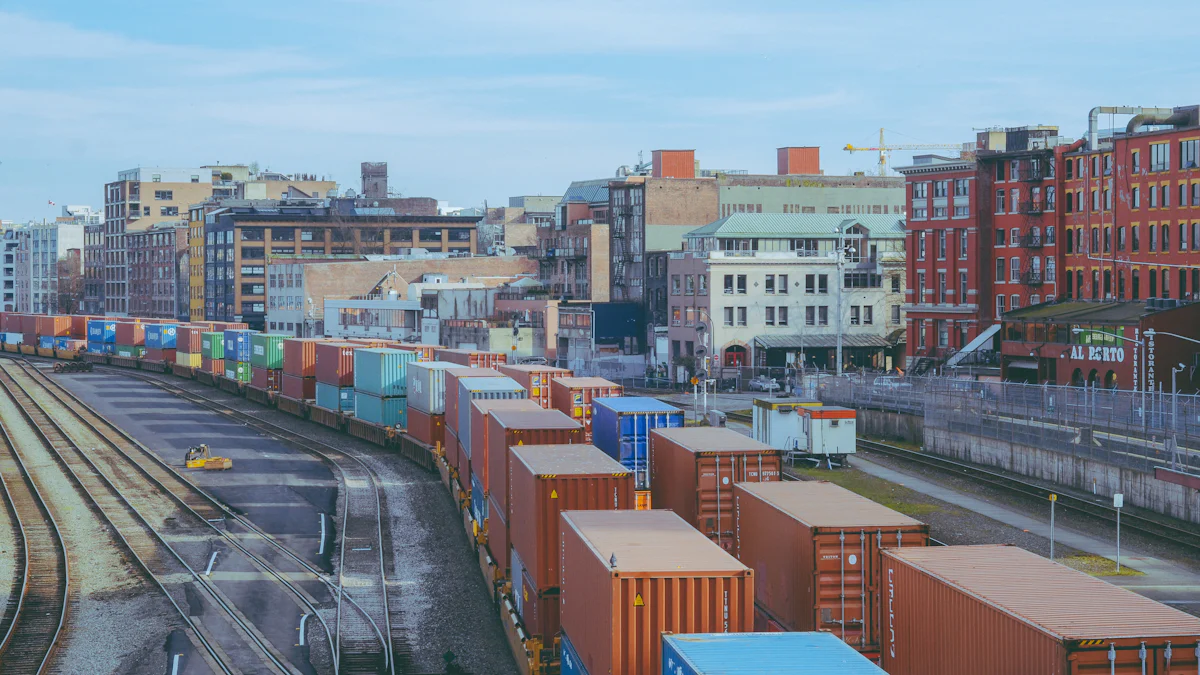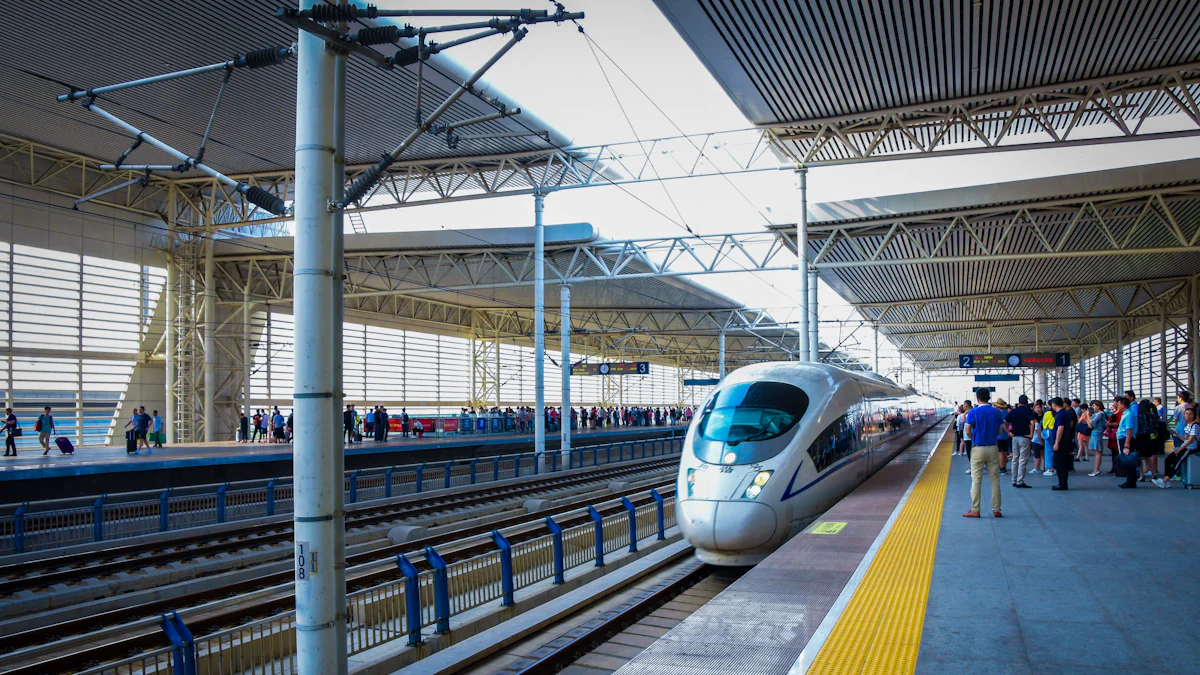China-Europe Railway: Predicting Market Dynamics and Growth in 2024

The China-Europe Railway has become a vital artery in global trade, connecting major economic hubs across Asia and Europe. This railway network has significantly boosted trade volumes, reduced carbon emissions, and created numerous jobs. The value of goods transported surged from $8 billion in 2016 to $56.7 billion in 2023. This blog aims to analyze the market dynamics and predict the growth trajectory for 2024, providing insights into the factors driving this expansion.
Overview of the China-Europe Railway

Historical Background
Development and Expansion
The China-Europe Railway has undergone significant development since its inception. The initial phase focused on establishing a reliable rail link between China and Europe. This phase saw the construction of key infrastructure and the establishment of major routes. Over the years, the network expanded to include more destinations and improved services. Modernization of ports along the route increased capacity in the west, middle, and east channels. This expansion facilitated economic and trade exchanges, transforming cross-border logistics.
Key Milestones
Several key milestones marked the evolution of the China-Europe Railway. The launch of the first freight train from Chongqing to Duisburg in 2011 set the stage for future growth. By 2013, trade volume had grown to 4 trillion yuan, showcasing the railway's impact on economic integration. In 2022, the trade volume surged to 7.42 trillion yuan. The completion of 92 operational routes connected 200 towns in 24 European nations. These milestones highlight the railway's role in boosting trade volumes and creating prosperity along the routes.
Current State
Major Routes
The China-Europe Railway operates several major routes that connect key economic hubs. The primary routes include the west, middle, and east channels. Each channel serves different regions and offers unique advantages. The west channel connects cities like Chongqing and Chengdu to European destinations such as Duisburg and Hamburg. The middle channel links Zhengzhou and Wuhan to European cities like Lodz and Tilburg. The east channel connects Yiwu and Suzhou to European destinations including Madrid and Milan. These routes ensure efficient transportation of goods across vast distances.
Key Players
Several key players dominate the China-Europe Railway market. Major companies like China Railway Express and DB Cargo play crucial roles in managing operations. These companies invest in technology and infrastructure to enhance service quality. Strategic partnerships with local rail operators and logistics providers ensure seamless connectivity. Government support also plays a vital role in the railway's success. Policies aimed at improving rail infrastructure and reducing operational inefficiencies contribute to the railway's growth. These key players and supportive policies drive the continued expansion of the China-Europe Railway.
Market Size and Economic Impact

Current Market Size
Trade Volume
The China-Europe Railway has experienced remarkable growth in trade volume. The value of goods transported increased from $8 billion in 2016 to $56.7 billion in 2023. This growth reflects the railway's efficiency and reliability. Over 50,000 different types of goods now travel via this route. These goods range from IT products to clothing, automobiles, daily necessities, food, timber, furniture, chemicals, and machinery. The diversity of goods highlights the railway's capacity to handle various cargo types.
Economic Contributions
The China-Europe Railway significantly contributes to the economies of both regions. The railway supports job creation and boosts local businesses. The trade volume grew from 4 trillion yuan in 2013 to 7.42 trillion yuan in 2022. This increase underscores the railway's role in economic integration. The market size reached USD 10.08 billion in 2023. This figure demonstrates the substantial economic impact of the railway on global trade.
Projected Market Growth
Growth Drivers
Several factors drive the projected growth of the China-Europe Railway. Technological advancements play a crucial role. The use of AI and big data processing enhances supply chain management. Strategic partnerships with major rail platforms ensure stable capacity and efficient operations. Government support through policies aimed at improving rail infrastructure further boosts growth. The integration of sea-rail intermodal transport and domestic multimodal transport increases efficiency. These factors collectively contribute to the railway's robust growth trajectory.
Economic Forecasts for 2024
The China-Europe Railway market is expected to grow significantly in 2024. The market size is projected to reach USD 12.70 billion. The annual number of freight train trips surged from 1,702 to over 17,000 between 2016 and 2023. The container transport from China to Europe via Russia saw a 44% increase in the first quarter of 2024 compared to the previous year. The International Monetary Fund raised China's economic growth forecast to 5% for 2024. These forecasts indicate a positive outlook for the railway's market dynamics and growth.
Market Trends and Dynamics
Emerging Trends
Technological Advancements
Technological advancements have revolutionized the China-Europe Railway. The integration of AI and big data processing has enhanced supply chain management. These technologies enable real-time tracking and predictive analytics, improving efficiency and reliability. The use of automated systems in cargo handling reduces operational inefficiencies. This leads to faster turnaround times and increased capacity.
Policy and Regulatory Changes
Policy and regulatory changes have also impacted the China-Europe Railway. Governments have introduced policies to improve rail infrastructure. These policies aim to reduce operational inefficiencies and enhance service quality. Regulatory changes focus on standardizing procedures across different regions. This ensures seamless connectivity and smooth operations. Government support plays a crucial role in the railway's growth.
Market Dynamics
Supply Chain Developments
Supply chain developments have significantly influenced the China-Europe Railway. The integration of sea-rail intermodal transport has increased efficiency. This includes services like full container and LCL (Less than Container Load) services. The use of temperature-controlled containers ensures the safe transport of perishable goods. Real-time monitoring and tracking enhance the reliability of the supply chain.
Demand Fluctuations
Demand fluctuations have also affected the China-Europe Railway. The growing demand for efficient and cost-effective transportation solutions drives the market. The railway network meets this demand by offering reliable and timely services. Economic factors influence demand patterns. For instance, the International Monetary Fund raised China's economic growth forecast to 5% for 2024. This positive outlook indicates a potential increase in demand for rail transport services.
"The China-Europe freight trains represent a new model of international transportation with advantages such as convenience, speed, safety, stability, and green economy. They have become widely popular as an international public product," said Huang Xin, deputy director of China Railway's cargo department.
The China-Europe Railway continues to evolve with emerging trends and dynamic market forces. Technological advancements and policy changes drive growth and efficiency. Supply chain developments and demand fluctuations shape the market landscape. The railway remains a vital artery in global trade, connecting major economic hubs across Asia and Europe.
Competitive Landscape
Key Competitors
Major Companies
The China-Europe Railway market features several major companies that play pivotal roles. China Railway Corporation stands as a dominant player, managing extensive rail operations and infrastructure. Deutsche Post DHL Group leverages its logistics expertise to enhance rail freight services. The Joint-stock company United Transport and Logistics Company Eurasian Rail Alliance focuses on seamless connectivity across Eurasia. Far East Land Bridge Ltd. provides specialized rail freight solutions, while DSV integrates multimodal transport services to boost efficiency.
Market Share Analysis
CRRC holds a commanding 30 percent share of the global rail market. This dominance surpasses the combined market share of Siemens, Alstom, and Bombardier. The competitive landscape reflects the strategic investments and operational efficiencies of these companies. China Railway Corporation and Deutsche Post DHL Group lead in market share within the China-Europe rail freight sector. The presence of multiple key players ensures a dynamic and competitive environment.
Competitive Strategies
Innovation and R&D
Innovation drives the competitive edge in the China-Europe Railway market. Companies invest heavily in research and development to enhance service quality. CRRC focuses on developing advanced rail technologies to improve efficiency. Siemens and Alstom emphasize automation and digitalization in their rail solutions. These innovations reduce operational costs and increase reliability. The adoption of AI and big data analytics optimizes supply chain management.
Strategic Partnerships
Strategic partnerships play a crucial role in the competitive landscape. China Railway Corporation collaborates with local rail operators to ensure seamless connectivity. Deutsche Post DHL Group partners with logistics providers to expand service offerings. The Eurasian Rail Alliance fosters cooperation among Eurasian countries for efficient rail transport. Far East Land Bridge Ltd. and DSV engage in joint ventures to enhance multimodal transport solutions. These partnerships drive growth and operational efficiency in the China-Europe Railway market.
Market Segmentation
By Cargo Type
Industrial Goods
The China-Europe Railway plays a crucial role in transporting industrial goods. The railway efficiently handles machinery, automotive parts, and raw materials. These goods form the backbone of manufacturing industries in both regions. The railway's reliability ensures timely delivery, reducing operational risks for businesses. Companies like Yuxinou (Chongqing) Logistics Co., Ltd. benefit from this efficiency. The deputy general manager, Zhang Rong, emphasizes the importance of timely arrivals for operational stability.
Consumer Goods
Consumer goods also constitute a significant portion of the cargo transported via the China-Europe Railway. Products such as electronics, clothing, and household items frequently travel this route. The railway offers a cost-effective solution for transporting high-demand consumer products. The use of temperature-controlled containers ensures the safe transit of perishable goods. Real-time monitoring enhances the reliability of these shipments. This capability attracts businesses looking to meet consumer demands promptly.
By Region
Eastern Europe
Eastern Europe benefits significantly from the China-Europe Railway. Countries in this region experience enhanced connectivity with major economic hubs in China. The railway supports local economies by facilitating trade and creating jobs. Key routes connect cities like Warsaw and Budapest to Chinese cities. This connectivity boosts the flow of goods, contributing to regional economic growth. The integration of sea-rail intermodal transport further enhances efficiency in this region.
Western Europe
Western Europe also reaps substantial benefits from the China-Europe Railway. Major economic centers such as Duisburg and Hamburg serve as critical nodes in the network. The railway supports the efficient movement of goods between China and Western Europe. Companies like China Railway Express and DB Cargo play pivotal roles in managing these operations. Strategic partnerships with local rail operators ensure seamless connectivity. Government policies aimed at improving rail infrastructure further bolster the railway's impact in this region.
"The train services provide a guarantee for the timely arrival of our goods and effectively reduce our operational risks," said Zhang Rong, deputy general manager of Yuxinou (Chongqing) Logistics Co., Ltd., the operator of the China-Europe freight train service in Chongqing.
The China-Europe Railway continues to evolve, offering diverse cargo solutions and enhancing regional connectivity. The segmentation by cargo type and region highlights the railway's versatility and broad impact on global trade.
The China-Europe Railway has shown remarkable growth and efficiency. The market size reached USD 10.08 billion in 2023, with projections indicating further expansion to USD 12.70 billion in 2024. Stakeholders should invest in infrastructure and technology to sustain this growth. Collaboration between countries and private sectors will enhance operational efficiency. Emphasizing sustainability will ensure long-term benefits. The railway's eco-friendly nature supports global efforts to combat climate change. The China-Europe Railway will play a pivotal role in shaping the future of global rail transport.
See Also
2024: The Latest Trends in Ocean Freight Logistics
In-Depth Analysis: The Future of Less-Than-Truckload Freight
Career Growth Ahead: Navigating the Future Supply Chain
Digital Transformation: The Future of Logistics Clarity
Ready for Change: Navigating the Latest in Supply Chain Tech
